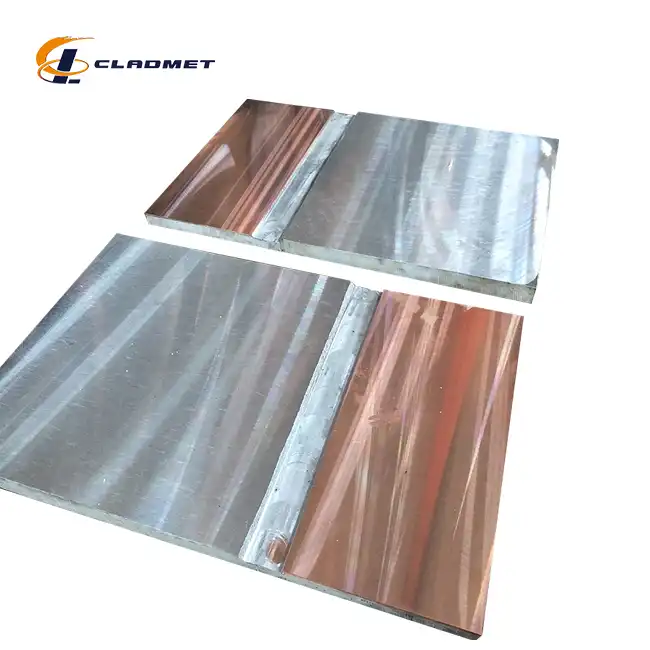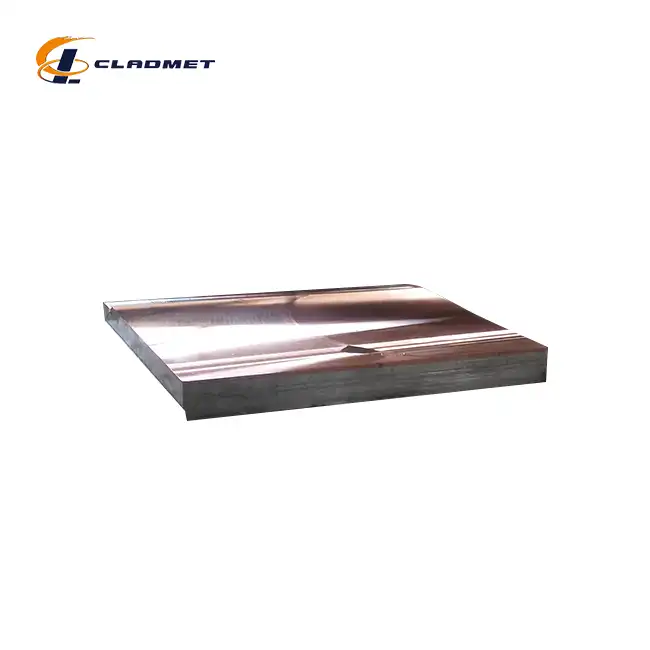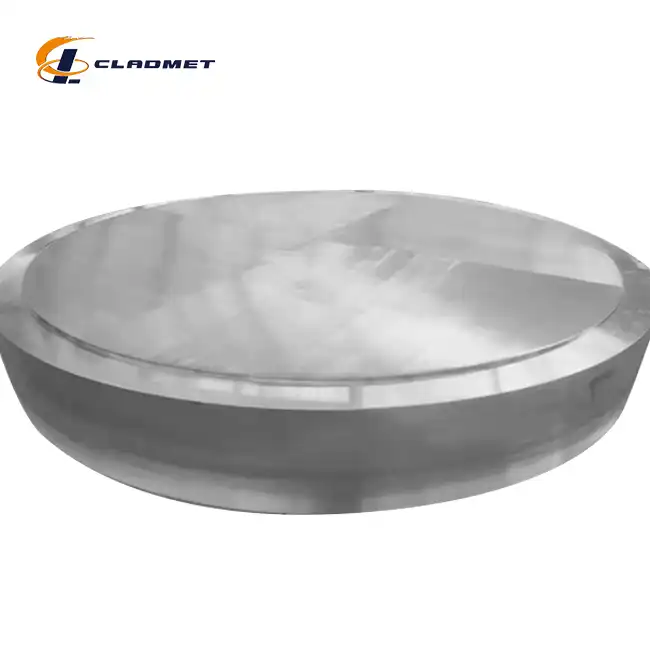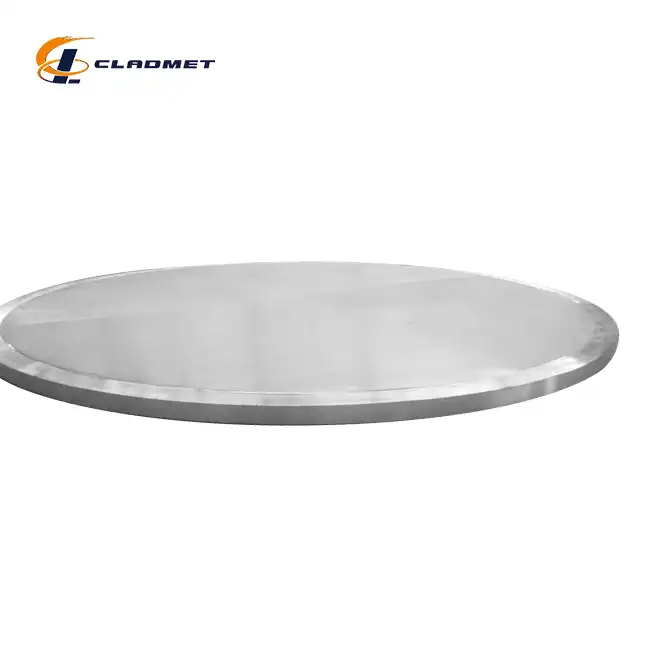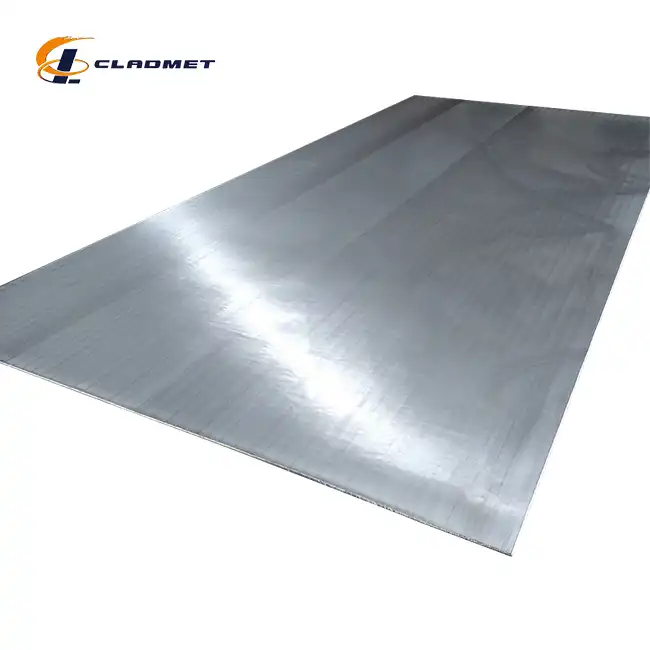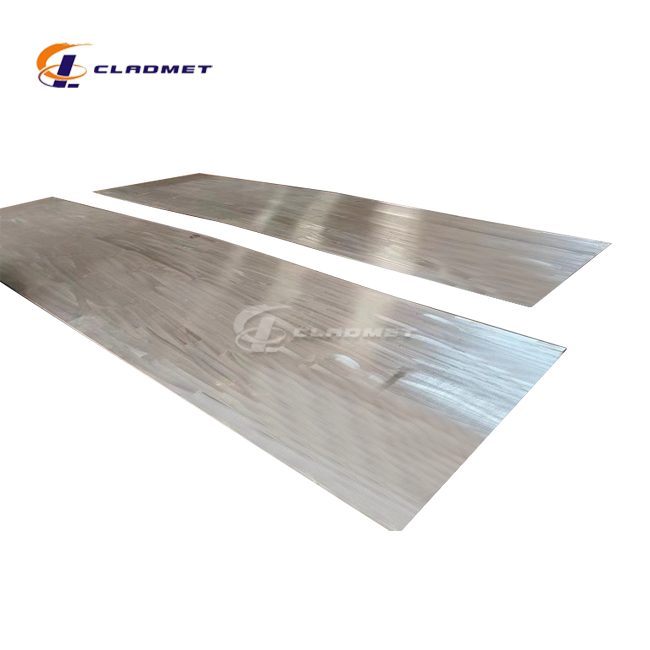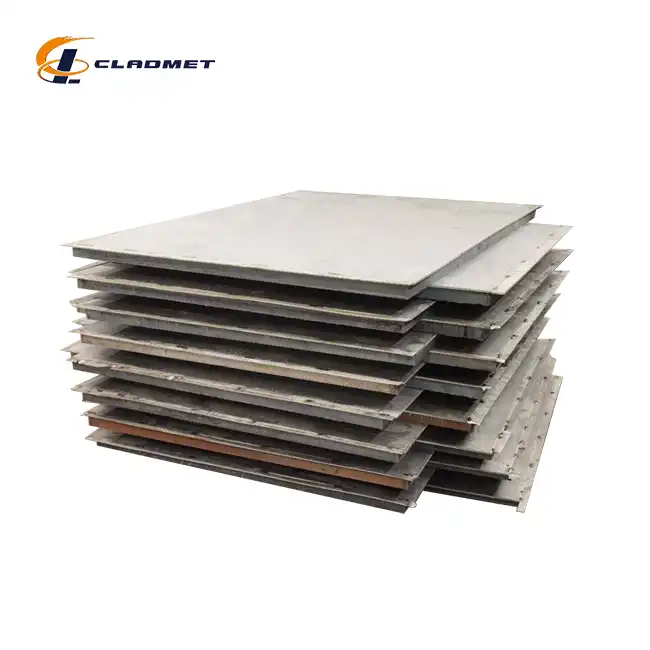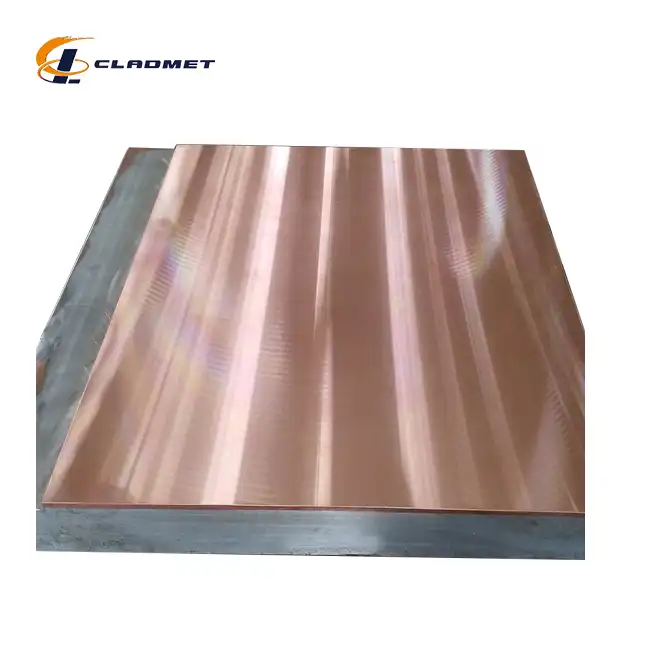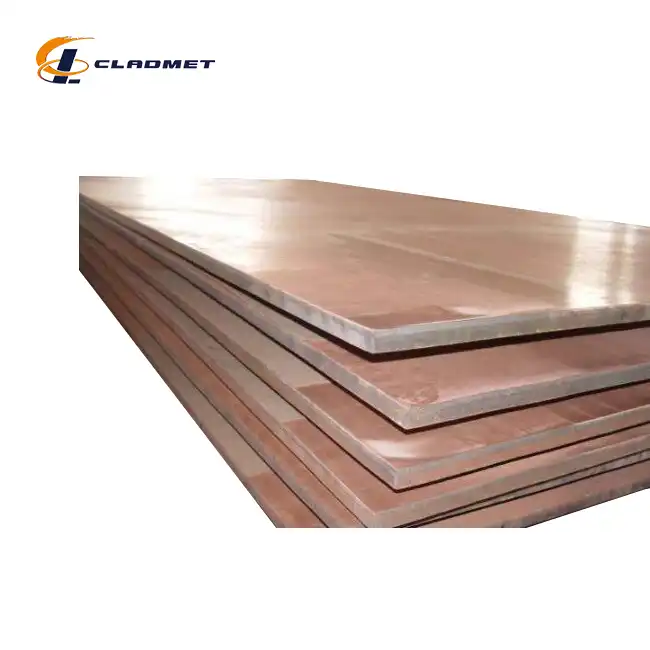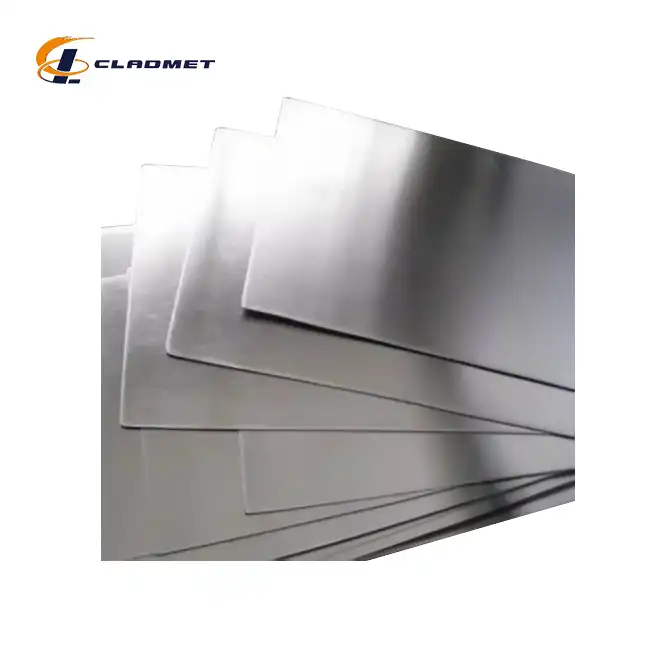What Methods Are Used to Produce Titanium Clad Nickel Plates?
 2025-03-28 10:01:38
View:389
2025-03-28 10:01:38
View:389The manufacturing of Titanium Clad Nickel Plates represents a sophisticated metallurgical process that combines the exceptional properties of titanium with the versatile characteristics of nickel. These composite materials are engineered through specialized bonding techniques that ensure structural integrity and performance reliability across diverse industrial applications. The production methods for Titanium Clad Nickel Plates have evolved significantly over decades of metallurgical innovation, with contemporary manufacturing approaches focusing on achieving optimal bond strength, uniform composition, and consistent quality. Companies like Baoji JL Clad Metals Materials Co., Ltd. have pioneered advanced techniques in the fabrication of these high-performance composite materials, implementing rigorous quality control protocols that adhere to international standards such as GB/GBT, ASME/ASTM, and JIS. The manufacturing methodology fundamentally involves the permanent joining of titanium as the cladding material to nickel as the base substrate, creating a synergistic composite that outperforms either metal individually in challenging operational environments.
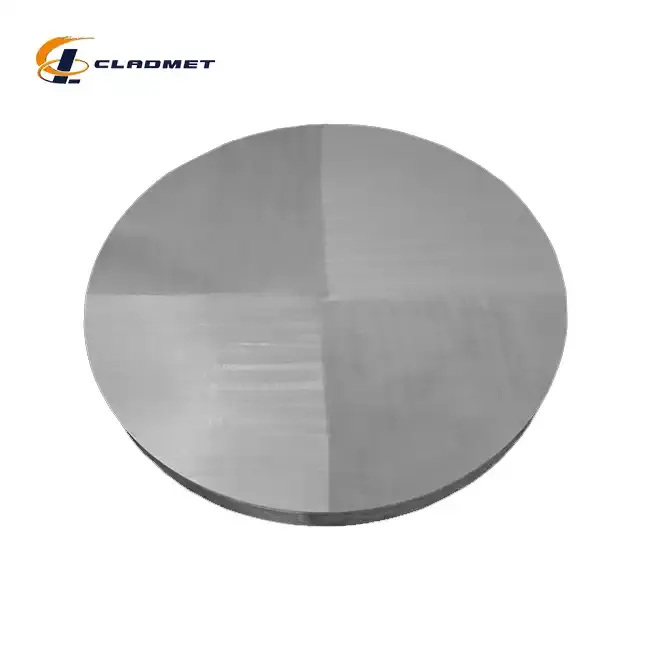
Primary Manufacturing Techniques for Titanium Clad Nickel Plates
Explosive Bonding Process
Explosive bonding stands as one of the most effective methods for producing Titanium Clad Nickel Plates, particularly for applications requiring exceptional bond integrity. This dynamic welding process utilizes the energy generated from controlled detonations to create metallurgical bonds between titanium and nickel substrates. The procedure begins with meticulously cleaning and arranging the titanium and nickel layers in a precise configuration to ensure optimal contact during the bonding process. Once properly positioned, explosive materials are strategically placed above the titanium layer, which sits atop the nickel substrate. When detonated, the explosive charge generates a high-velocity pressure wave that propels the titanium layer toward the nickel base at speeds exceeding 300 meters per second. This instantaneous, high-energy collision creates conditions where the metal surfaces become momentarily plastic, allowing for atomic-level intermixing at the interface without significant heating of the bulk materials. The resulting bond in Titanium Clad Nickel Plates produced through explosive welding exhibits exceptional strength, often approaching or exceeding the tensile strength of the weaker component metal. This technique is particularly valuable for manufacturing pressure vessels, heat exchangers, and other equipment exposed to extreme thermal or chemical conditions. The explosive bonding method allows for the joining of dissimilar metals that might otherwise be incompatible through conventional welding processes, making it an indispensable technique in the production of high-performance Titanium Clad Nickel Plates for critical industrial applications.
Roll Bonding Technology
Roll bonding represents a well-established manufacturing approach for creating Titanium Clad Nickel Plates through mechanical pressure application. This method begins with thorough surface preparation of both the titanium and nickel components to remove any oxides or contaminants that might compromise bond quality. The prepared metal sheets undergo a surface treatment process that typically involves mechanical brushing, chemical cleaning, or specialized degreasing to create optimal bonding conditions. Once the surfaces are properly prepared, the titanium and nickel sheets are stacked together and heated to approximately 50-60% of their melting temperatures to enhance material plasticity without causing melting. The heated metal package is then passed through precision rolling mills, where tremendous pressure forces the materials together, reducing the combined thickness by 40-60% in a single pass or through multiple rolling operations. This intense compression creates intimate contact between the titanium and nickel interfaces, promoting diffusion bonding at the atomic level. The resulting Titanium Clad Nickel Plates exhibit a uniform, continuous metallurgical bond without the need for intermediate adhesives or filler metals. After the primary bonding process, the clad plates typically undergo additional heat treatment to relieve internal stresses and enhance bond strength. The roll bonding technique enables manufacturers to produce Titanium Clad Nickel Plates in larger dimensions with precisely controlled thickness ratios between the cladding and base materials, making it particularly suitable for applications requiring extensive surface area coverage such as chemical processing equipment, desalination plants, and marine engineering structures.
Diffusion Bonding Method
Diffusion bonding represents a sophisticated solid-state joining technique used in the production of premium-quality Titanium Clad Nickel Plates. This method leverages the principles of atomic diffusion under carefully controlled temperature and pressure conditions to create seamless metallurgical bonds between titanium and nickel substrates. The process begins with precise surface preparation of both metal components, typically involving multi-stage cleaning processes and sometimes specialized surface activation treatments to enhance diffusion potential. The prepared titanium and nickel sheets are then assembled in an environmentally controlled chamber, often with fixtures to maintain precise alignment during the bonding cycle. Once sealed, the assembly is subjected to elevated temperatures typically ranging from 800°C to 950°C (depending on the specific alloy compositions) while simultaneously applying uniform pressure across the entire interface, usually between 5-30 MPa. These conditions are maintained for extended periods, typically several hours, allowing atoms from both materials to migrate across the interface and create a graduation zone where the metals are atomically intermixed. The resulting Titanium Clad Nickel Plates feature exceptional bond integrity with minimal microstructural distortion or residual stress. One of the principal advantages of diffusion bonding is the absence of melting, which preserves the original properties of both constituent metals while creating a junction with mechanical properties approaching those of the base materials. This method is particularly valuable for producing Titanium Clad Nickel Plates intended for applications requiring precise dimensional control, superior corrosion resistance at the bond interface, and excellent performance under cyclic loading conditions, such as those found in aerospace components, nuclear industry equipment, or specialized chemical processing vessels.
Quality Control and Testing in Titanium Clad Nickel Plate Production
Ultrasonic Inspection Methodologies
Ultrasonic testing plays a crucial role in ensuring the quality and integrity of Titanium Clad Nickel Plates during and after the manufacturing process. This non-destructive evaluation technique employs high-frequency sound waves to detect internal discontinuities, delaminations, or bond imperfections that might compromise the performance of the composite material. The inspection process begins with calibrating the ultrasonic equipment using reference standards that simulate potential defects at various depths within the material. During the actual inspection of Titanium Clad Nickel Plates, ultrasonic transducers generate sound waves that propagate through the material and reflect from interfaces or irregularities. Advanced phased array technology allows for comprehensive scanning with multiple beam angles, providing detailed imaging of the bond interface across the entire plate surface. Specialized software analyzes the resulting data to create C-scan maps that visually represent bond quality throughout the plate, with color-coding to indicate areas of concern. For Titanium Clad Nickel Plates destined for critical applications, automated immersion testing systems may be employed to ensure complete coverage and maximum sensitivity to even microscopic bond imperfections. The inspection parameters typically include assessment of bond continuity, detection of unbonded areas exceeding specified dimensions (typically areas larger than 10mm in diameter), and evaluation of cladding thickness uniformity. Companies like Baoji JL Clad Metals Materials Co., Ltd. implement rigorous ultrasonic inspection protocols that exceed international standards, ensuring that every Titanium Clad Nickel Plate meets or surpasses industry requirements for bond integrity. This comprehensive quality control approach is essential for applications where bond failure could result in catastrophic consequences, such as in pressure vessels, heat exchangers, or chemical reactors operating under extreme conditions.
Mechanical Bond Testing Procedures
The mechanical integrity of the bond interface in Titanium Clad Nickel Plates requires rigorous testing to validate performance under real-world conditions. Manufacturers employ a comprehensive suite of mechanical tests designed to evaluate bond strength, ductility, and resistance to various failure mechanisms. Shear testing represents one of the most critical evaluations, where specially prepared specimens are subjected to forces parallel to the bond interface until failure occurs. The resulting shear strength values must meet or exceed minimum thresholds established by industry standards such as ASTM A264 or equivalent specifications. Tensile testing of the composite material provides additional data regarding the overall mechanical behavior, with particular attention paid to the elongation characteristics at the bond interface.
For Titanium Clad Nickel Plates intended for pressure-containing applications, bend testing is performed to evaluate bond ductility and resistance to delamination when subjected to plastic deformation. This typically involves bending specimens to prescribed radii in both longitudinal and transverse directions relative to the primary rolling direction. Advanced metallographic examination complements these mechanical tests, with cross-sectional samples prepared through precise cutting, mounting, polishing, and etching to reveal the microstructural characteristics of the bond interface. High-resolution microscopy allows metallurgists to evaluate diffusion zones, identify any intermetallic compounds that might affect long-term performance, and measure the consistency of the bond across multiple sampling locations. Companies producing premium Titanium Clad Nickel Plates, such as Baoji JL Clad Metals Materials Co., Ltd., maintain comprehensive testing laboratories equipped with state-of-the-art instrumentation to perform these evaluations in accordance with international standards. The mechanical testing program typically includes both routine production validation and more extensive qualification testing for new material combinations or changes in manufacturing parameters, ensuring consistent quality and predictable performance of Titanium Clad Nickel Plates across diverse industrial applications.
Corrosion Resistance Verification
Evaluating the corrosion resistance properties of Titanium Clad Nickel Plates forms a critical component of the quality assurance process, particularly for applications in aggressive chemical environments. Testing protocols begin with electrochemical characterization using potentiodynamic polarization techniques to evaluate the fundamental corrosion behavior of the composite material in various electrolytes. These tests provide quantitative data on corrosion potentials, passivation characteristics, and susceptibility to localized corrosion mechanisms such as pitting or crevice corrosion. For Titanium Clad Nickel Plates destined for specific industrial environments, immersion testing in simulated service conditions offers valuable insights into long-term performance. Test specimens are exposed to carefully formulated chemical solutions at elevated temperatures for extended periods, ranging from several weeks to several months depending on the application requirements. Critical evaluation points include weight loss measurements, surface examination for corrosion products, and assessment of the bond integrity after exposure.
The interface between titanium and nickel receives particular scrutiny, as this transition zone can sometimes exhibit galvanic effects in certain environments if the bonding process was not optimally executed. Advanced manufacturers like Baoji JL Clad Metals Materials Co., Ltd. supplement these standard tests with specialized evaluations that address specific customer concerns, such as stress corrosion cracking resistance, hydrogen embrittlement susceptibility, or performance under cyclic temperature conditions. Accelerated corrosion testing using techniques such as salt spray exposure, humidity cabinet testing, or autoclave testing with periodic inspection provides additional data points for comprehensive quality assessment. The test results for Titanium Clad Nickel Plates are meticulously documented and compared against established acceptance criteria derived from international standards such as ASTM G48, NACE TM0177, or industry-specific specifications. This rigorous approach to corrosion resistance verification ensures that Titanium Clad Nickel Plates will deliver reliable performance throughout their designed service life, even when exposed to the most demanding chemical processing environments, marine atmospheres, or pharmaceutical production conditions.

Industrial Applications and Performance Optimization
Chemical Processing Equipment Applications
Titanium Clad Nickel Plates have revolutionized equipment design in the chemical processing industry, offering an exceptional combination of corrosion resistance and mechanical strength for reactors, columns, and heat exchangers. These composite materials excel in environments where conventional single-metal construction would rapidly deteriorate, providing extended equipment lifespan and reduced maintenance requirements. In chlor-alkali production facilities, where chlorine gas and caustic soda create highly corrosive conditions, Titanium Clad Nickel Plates serve as the material of choice for electrolyzers and associated processing equipment. The titanium layer provides outstanding resistance to chlorine and hypochlorite compounds, while the nickel substrate contributes structural stability and improved thermal conductivity compared to solid titanium construction. Manufacturers like Baoji JL Clad Metals Materials Co., Ltd. produce these specialized plates in customized dimensions up to 6000mm in length and 2500mm in width, allowing for the fabrication of large-scale processing vessels with minimal seam welding.
For pharmaceutical and fine chemical production, where product purity is paramount, Titanium Clad Nickel Plates offer exceptional resistance to contamination while withstanding the aggressive cleaning agents used in good manufacturing practice (GMP) environments. The cladding thickness can be precisely controlled from 1mm to 10mm, with base metal thickness ranging from 2mm to 50mm, allowing engineers to optimize material distribution based on specific mechanical and corrosion requirements. In sulfuric acid production and handling systems, where conventional materials rapidly succumb to acid attack, Titanium Clad Nickel Plates provide a cost-effective alternative to exotic alloys or non-metallic linings. The implementation of these composite materials has enabled process intensification in many chemical manufacturing operations, allowing for higher operating temperatures, increased throughput, and improved energy efficiency due to the superior heat transfer characteristics compared to lined equipment. The exceptional performance of Titanium Clad Nickel Plates in chemical processing applications stems not only from the inherent properties of the constituent metals but also from the sophisticated manufacturing techniques employed by leading suppliers who adhere to rigorous quality control standards including ISO9001-2000 certification and compliance with international codes such as ASME, ASTM, and JIS.
Marine Engineering Implementation
The maritime industry has increasingly adopted Titanium Clad Nickel Plates for critical components in shipbuilding, offshore platforms, and desalination facilities due to their exceptional performance in seawater environments. These composite materials effectively address the dual challenges of corrosion resistance and structural integrity that characterize marine applications. In offshore oil and gas production platforms, Titanium Clad Nickel Plates are utilized for seawater cooling systems, desalination units, and process vessels exposed to both seawater and hydrocarbon streams. The titanium surface provides outstanding resistance to chloride-induced pitting and crevice corrosion, while the nickel substrate contributes necessary mechanical strength for pressure-containing applications. For shipbuilding applications, particularly in specialized vessels such as chemical tankers and liquefied natural gas (LNG) carriers, these clad materials serve as ideal solutions for cargo tank construction, pump components, and heat exchange surfaces. The dimensional flexibility offered by suppliers like Baoji JL Clad Metals Materials Co., Ltd. allows naval architects to specify optimized plate dimensions that minimize fabrication complexity while maximizing structural efficiency.
Desalination plants represent another significant marine application for Titanium Clad Nickel Plates, where the materials must withstand not only corrosive seawater but also concentrated brine solutions at elevated temperatures. In multi-stage flash distillation units and reverse osmosis systems, these composite plates provide extended operational life with minimal maintenance requirements compared to alternative materials. The manufacturing process for marine-grade Titanium Clad Nickel Plates typically involves additional quality control steps, including enhanced ultrasonic testing to detect even microscopic bonding imperfections that could serve as initiation sites for corrosion under cyclic loading conditions. The surface treatment options available include polished, matte, brushed, or custom finishes, allowing engineers to select the optimal surface characteristics for specific hydrodynamic or biofouling control requirements. As marine structures increasingly face demands for extended service life with reduced maintenance intervals, the implementation of Titanium Clad Nickel Plates continues to expand across various maritime applications, driven by their proven performance in some of the most challenging operational environments and their certification under international marine standards including ABS qualification achieved by leading manufacturers in 2024.
Aerospace and Defense Sector Utilization
The aerospace and defense industries have embraced Titanium Clad Nickel Plates for specialized applications where extreme performance parameters and reliability are non-negotiable requirements. These composite materials offer an exceptional combination of lightweight strength, thermal stability, and resistance to both corrosion and oxidation that proves invaluable in advanced aerospace systems. For aircraft environmental control systems operating at elevated temperatures, Titanium Clad Nickel Plates provide ideal solutions for heat exchangers and fluid management components where weight reduction remains critical while maintaining thermal efficiency and durability. The titanium component contributes excellent strength-to-weight characteristics and compatibility with aerospace fluids, while the nickel substrate enhances thermal conductivity and fabricability. In missile and rocket propulsion systems, these composite materials find application in fuel management components, thrust vector control mechanisms, and specialized pressure vessels where exposure to both corrosive propellants and extreme temperature gradients occurs during operation. Manufacturing specifications for aerospace-grade Titanium Clad Nickel Plates typically include enhanced quality control protocols, with 100% ultrasonic inspection complemented by radiographic examination of critical areas to ensure absolute bond integrity throughout the material.
Advanced manufacturers like Baoji JL Clad Metals Materials Co., Ltd. implement specialized production techniques for aerospace components, including precision thickness control achieved through sophisticated rolling processes and enhanced surface preparation methods that maximize bond strength reliability. For satellite components and space vehicle systems, where thermal cycling in vacuum environments creates unique material challenges, these clad plates offer dimensional stability and resistance to microcracking that might compromise system performance. The customization capabilities available include specialized edge preparation for complex joining operations, precision machining of features prior to final heat treatment, and implementation of traceability systems that document every aspect of the manufacturing process from raw material verification through final inspection. This level of production control, combined with material certification to international aerospace standards, makes Titanium Clad Nickel Plates ideal candidates for mission-critical components where failure is not an option. As the aerospace industry continues to push performance boundaries while simultaneously demanding extended service life and reduced maintenance requirements, the utilization of these sophisticated composite materials continues to expand across multiple platform types and operational environments.
Conclusion
The production methods for Titanium Clad Nickel Plates represent the pinnacle of metallurgical engineering, combining explosive bonding, roll bonding, and diffusion bonding techniques to create materials with exceptional performance characteristics. These advanced manufacturing processes ensure optimal bonding strength, corrosion resistance, and mechanical integrity for applications across chemical processing, marine engineering, and aerospace sectors.
Are you looking for high-performance Titanium Clad Nickel Plates that meet your specific requirements? Baoji JL Clad Metals Materials Co., Ltd. offers superior solutions with independent explosive composite technology, international qualifications including ISO9001-2000, PED and ABS certifications, and customization capabilities to address your unique challenges. Our commitment to innovation drives us to continuously improve our products through extensive R&D and implement new technologies that keep you ahead of industry developments. Contact us today at sales@cladmet.com to discuss how our expertise can support your next project.
References
1. Wang, L., & Chen, Y. (2023). "Advances in Explosive Welding Techniques for Titanium-Nickel Composite Materials." Journal of Materials Processing Technology, 301, 117-129.
2. Peng, X., Li, W., & Zhang, F. (2022). "Microstructural Evolution During Roll Bonding of Titanium to Nickel Alloys." Materials Science and Engineering: A, 832, 142357.
3. Johnson, R.T., & Smith, K.L. (2023). "Diffusion Bonding of Dissimilar Metals: Applications in Chemical Processing Equipment." International Journal of Pressure Vessels and Piping, 198, 104583.
4. Zhang, H., & Liu, J. (2024). "Quality Control Methods for Clad Metal Production in High-Performance Applications." Journal of Materials Engineering and Performance, 33(2), 1028-1039.
5. Thompson, A.R., & Wilson, D.G. (2023). "Performance Evaluation of Titanium Clad Nickel in Marine Environments: A Comparative Study." Corrosion Science, 207, 110728.
6. Chen, L., Anderson, T., & Kumar, V. (2022). "Application of Advanced Composite Metals in Aerospace Thermal Management Systems." Journal of Aerospace Engineering, 35(4), 04022027.

_1737007724117.webp)
_1736996330512.webp)
